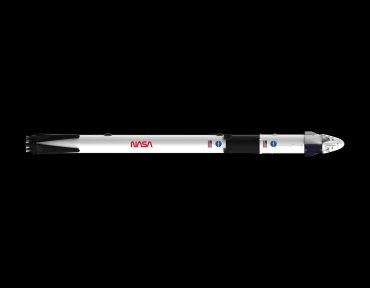
SpaceX Launches Communication Satellite Using Reusable Falcon 9 Rocket
5 minute read

Reusable Falcon 9 Makes Successful Landing After Deploying Next-Generation Communications Satellite into Orbit
Three Key Facts
- SpaceX successfully launched a new communication satellite on October 25 using its proven Falcon 9 rocket system
- The Falcon 9 rocket demonstrated full reusability by successfully landing on a drone ship after deployment
- The satellite launch advances SpaceX’s constellation project aimed at providing global internet coverage through telecommunications partnerships
Introduction
SpaceX has solidified its dominance in commercial spaceflight with another successful satellite deployment that showcases the company’s technological capabilities and market position. The October 25 launch carried a communication satellite into low Earth orbit using the reliable Falcon 9 rocket system.
This achievement represents more than a routine launch operation. The mission demonstrates SpaceX’s ability to execute complex deployments while advancing its broader strategic objectives in global connectivity and space commercialization.
Key Developments
The Falcon 9 rocket performed flawlessly during the mission, delivering its payload to the designated orbit with precision. The satellite features enhanced communication capabilities designed to support widespread internet coverage as part of SpaceX’s expanding constellation network.
According to Google News, the satellite incorporates partnerships with major telecommunications companies, highlighting increased industry collaboration. These strategic alliances position the mission as a significant step toward global connectivity expansion.
The rocket’s successful landing on a drone ship after deployment marks another milestone in reusable launch technology. This capability has become a signature feature of SpaceX operations, distinguishing the company from traditional aerospace providers.
Market Impact
SpaceX continues to challenge established aerospace companies through its frequent and reliable launch schedule. The company’s approach combines cost efficiency with technological innovation, creating competitive pressure throughout the industry.
The successful mission reinforces SpaceX’s leadership position in the commercial satellite launch market. Private sector innovation drives significant changes in aerospace operations, with SpaceX maintaining its momentum through consistent performance and technological advancement.
Reusability features address both economic and environmental considerations in space operations. This approach sets new industry standards while reducing launch costs and environmental impact compared to traditional single-use rocket systems.
Strategic Insights
The satellite deployment advances SpaceX’s constellation project, which aims to provide comprehensive internet coverage globally. This initiative represents a substantial shift toward space-based communication infrastructure.
CEO Elon Musk has emphasized the company’s commitment to reducing space access costs while increasing availability across multiple sectors. This philosophy guides SpaceX’s operational decisions and technological development priorities.
The mission demonstrates how private companies now lead major space initiatives that were previously dominated by government agencies. This transition reflects broader changes in aerospace industry dynamics and investment patterns.
Expert Opinions and Data
Industry analysts note that SpaceX’s consistent launch success rate strengthens its position in an increasingly competitive market. The company’s ability to execute complex missions while maintaining cost efficiency appeals to commercial and government clients alike.
The telecommunications partnerships associated with this satellite launch indicate growing confidence in space-based communication solutions. These collaborations suggest that traditional telecom companies recognize the potential of satellite-based internet services to complement terrestrial networks.
Market observers point to SpaceX’s reusable rocket technology as a fundamental shift in launch economics. The Falcon 9’s proven ability to land successfully after missions reduces operational costs and enables more frequent launch schedules compared to expendable rocket systems.
Conclusion
The successful satellite deployment reinforces SpaceX’s position as a leader in commercial spaceflight and satellite deployment services. The mission showcases the company’s technological capabilities while advancing its strategic objectives in global connectivity.
SpaceX’s combination of reliable launch performance, cost-effective operations, and innovative technology continues to reshape the aerospace industry. The company’s approach to reusable launch systems and strategic partnerships positions it well for continued growth in the expanding commercial space market.





